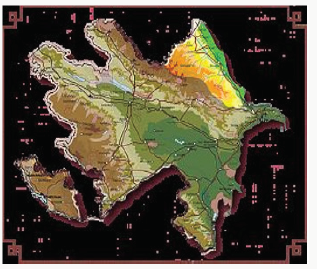Lupine
Publishers- Environmental and Soil Science Journal
Abstract
The Researchers proved that the process of soil erosion is also
closely linked to climatic conditions of the region. Therefore,
depending on the climatic conditions of the erosive processes are
different in both forms of its manifestation, and the quantitative
indicators of development. For example, in the north-eastern part of the
Greater Caucasus Highlands powerful deposition of
snow cover, high intensity of spring melting of snow and summer rain
water rainfalls the calling intensive lavages and size of its
development areas. But here, against a backdrop of high air temperatures
during the growing season, pronounced wind regime
and extremely low relative humidity of the air is wind erosion. Climate
also affects the surface configuration. Humid areas where
vegetation cover protects the soil from severe manifestations of water
and wind erosion, characterized by soft, rounded slopes.
Introduction
Soil erosion is an ongoing process, which consists in moving
soil mass from one place to another, under the influence of water,
wind and gravity [1]. Among the numerous classifications, organize
my erosive phenomenon, the most important is the separation
of erosion: natural (caused by forces of nature) and accelerated
(caused by human activities). Erosion processes caused by forces
of nature (wind, water and gravity erosion), the largest scale in a
glacial period when the vegetation was negligible. The emergence
of higher (herbaceous and woody) plants heavily restricted
and even helped to overcome the action of erosion processes,
accelerate soil formation processes and soil formation [1,3]. Human
activities (agriculture (agronomy) erosion) is the main factor which
contributes to development and an increase in the intensity of
erosion processes, collapsing the Earth’s mainland surface, which
led to the significant in terms of size, soil degradation, reducing,
and even destruction of its productive capacity, compared with
natural conditions [2].
Progress in the Study and Discussion of Materials
(Economic), from a practical point of view stands out-a potential
erosion described as erosion risk and actual (current) erosion,
described as erosive damage in mostly size floating soil masses (in
mm thickness or t/ha or km2). Along with that, in areas with dry
climates where the water flows very fast and where the wind taking
sand particles and working them as cutter, erases the surface and
sweeps weathering products typical of sharply defined overskirt.
When examining the erosion problem is extremely important
to identify leading factors and establish their relevance to the erosive
process. Such determinant nature of erosion is primarily
precipitation, then wind regime [3]. Development intensity of
erosion processes is defined not only in terms of average annual
precipitation in the area, but also to a large extent, their intensity.
If most of the annual rainfall mean weak or moderate falling rain,
moisture is absorbed into the soil without runoff and erosion,
favorable conditions for snow water absorption of small runoff and
erosion of underdevelopment is created and, if large part of rainfall
on soil nonfreezing or motion enough snow limits the freezing it
[2,5]. With little snow cover and the same deep frost heave soil
warm spring rains can cause increased melting of snow, strong
stock and sharply expressed by erosion. Of equal importance is
the distribution of rainfall in time. Particularly unfavorable for
erosion control is a long, albeit moderate intensity falling rain and
extremely intense intermittent showers. The first type of falling
rain soil, sated after some time in the future moisture absorbs it
very slowly, with the result that the run off and surface erosion
are amplified When intense. showers water enters the soil surface
so fast that even structural, drained soil doesn’t absorb increases
it, resulting in the formation of enhanced runoff and erosion.
Especially destructive processes of storm runoff and washing,
where vegetation, slopes, even from much permeability of soils do
not protect [2,3]. Pounding raindrops in this case crush soil (semi
arid and arid regions) aggregates and form on the soil surface rather
ton, razzhizhennuju mud, which clogs the pores of the infiltration
process and drastically weakens the absorption of moisture. This in
turn reinforces the excessively drain and erosion even on light soils.
On the surface of the chilled soil flushing processes are absent.
But the freezing and thawing of the soil the timephased cause
slipping its particles and even washed away down the slope.These
processes of sliding and soil flushing occur particularly intensively
in cases where spring temperatures accompanied by warm rains.
Rains causing it to thawing the soil, often wash off all its surface
layer.The erosion caused by rain and heavy waters, exposure
conditions affected to a much lesser extent. The wind is also a very
important and active agent of erosion, which is widely published
in the form of wind erosion, exclusively inherent in semi-arid and
arid regions, although only to the extent that this factor is the most
dramatic [3,5]. In essence, the same uncoated soil surface depends
to a greater or lesser degree on the distorting effect of wind flowing
all over the world, even in wet areas. Under the influence of a
blatant and smoothening (winding) wind vortex, the soil particles
rise into the air and larger moving rolling elements either in jumps
and boundaries and precipitate to form deposits in the form of spit,
ridges or dunes, the risk of wind erosion especially increases the
dryness of the weather in spring [2,6].
Follow on Linkedin : https://www.linkedin.com/company/lupinepublishers
Follow on Twitter : https://twitter.com/lupine_online

No comments:
Post a Comment
Note: only a member of this blog may post a comment.